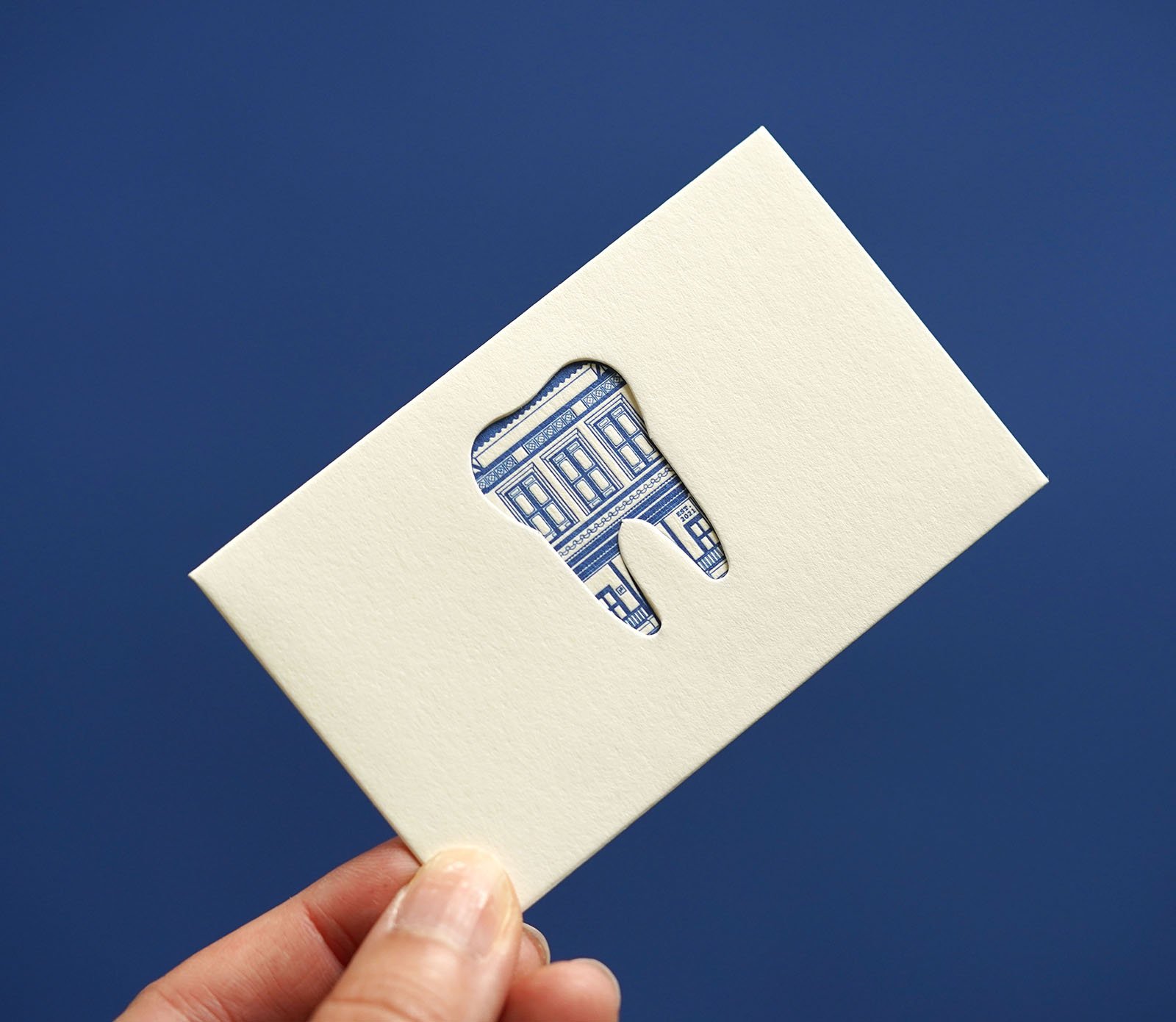Press & Process
Ways We Make Things Pretty
We believe in thoughtful printing — slow, deliberate, and full of care. Though small in size, our studio thrives on curiosity, always open to exploring new techniques and expanding what’s possible with ink, impression, and a little experimentation. Here are some of the print and finishing technique we have to offer,
Print Techniques
Letterpress
Tactile, timeless, and deeply satisfying
Pros
– Beautiful texture and depth
– Ideal for minimal designs
– Works best on thick, uncoated stocks
– Handcrafted appeal
Cons
– Not suitable for photographic or full-colour designs
– Higher setup time and cost per colour
Letterpress is a relief printing technique where inked plates are pressed into paper, creating a deep impression. It’s perfect for projects where touch and craftsmanship matter — think wedding stationery, name cards, and keepsake prints. Designs are usually spot colour and minimal for best results.
Hot Foil
For when you want your print to shine — literally.
Pros
– Luxurious metallic finish (gold, silver, holographic, etc.)
– Works on dark stocks
– Adds elegance and attention to detail
– No ink needed
Cons
– No gradients or full-colour imagery
– One colour foil at a time
Hot foil stamping uses heat, pressure, and metallic foil to create eye-catching highlights on paper. It’s commonly used for logos, monograms, and titles — anywhere you want shine or contrast. It pairs beautifully with letterpress or embossing for premium finishes.
Offset Print
Clean, consistent, and reliable
Pros
– Excellent for high-volume runs
– Full-colour and photo-friendly
– Sharp, consistent quality
– Wide variety of paper options
Cons
– Not cost-effective for small quantities
– Less tactile than specialty printing
Offset printing uses metal plates to transfer ink onto paper via rollers. It’s ideal for detailed artwork, books, and packaging requiring consistent colour and clarity. Best used when printing hundreds or thousands of copies.
Digital Print
Fast, flexible, and no-fuss
Pros
– Quick turnaround
– Great for small quantities
– Supports variable data (e.g., names, addresses)
– Cost-effective for prototypes
Cons
– Colours can be less rich than offset
– Roller marks especially with large solid colours
Digital printing doesn’t require plates — it prints directly from file to paper. Ideal for print-on-demand, invitations, cards, and low-quantity needs. It's efficient and economical for tight timelines and flexible jobs.
Screen Print
Vibrant, bold, and slightly rebellious
Pros
– Rich, opaque colour
– Great for limited edition runs
– Works on paper, fabric, wood, and more
– Custom ink types (metallic, neon, glow-in-the-dark)
Cons
– Not suitable for fine detail or photos
– Each colour needs a separate screen
Silkscreen is a stencil-based printing method where ink is pushed through a mesh screen onto the material. It produces strong, graphic results and works best for bold text, illustrations, and experimental textures. A favourite for art prints and posters.
Giclée Print
Archival-quality printing with painterly detail
Pros
– Exceptional colour accuracy and tonal range
– Archival-grade (fade-resistant for decades)
– Handles fine gradients and photographic detail beautifully
– Wide range of canvas options
Cons
– Slower and more costly than standard digital printing
– Not ideal for large quantities
Giclée is a high-resolution inkjet printing technique used for reproducing fine art and photography. Using pigment-based inks on archival papers or canvas, it delivers stunning detail and longevity. Ideal for artists and illustrators looking to create gallery-quality prints in small batches.
Finishing
2D / 3D Emboss
Texture you can see and feel.
Raised detailing pressed into paper — subtle or sculptural, depending on depth. 2D emboss adds surface lift, while 3D creates multi-level texture for a more tactile finish.
Diecut
Cut to shape, not to size.
Custom shapes, windows, or curves — die-cutting lets your design break out of the box (literally). Great for edges, reveals, or playful forms.
Blind Deboss
Says a lot without saying anything.
No ink, just impression. A custom plate is pressed into the stock, creating a recessed design with quiet impact. Understated and elegant.
Duplex / Triplex
Twice the weight, double the presence.
Two sheets, one unified print surface. Duplexing bonds two papers into one thicker card — perfect for added weight, contrast, or hidden colour edges.
Edge Paint / Gilding
A flash of colour where you least expect it.
The finishing touch — painted or foiled edges that add a pop of colour or shine when viewed from the side. A detail that speaks volumes.
Deckle Edge
Beautifully rough around the edges.
Feathered, torn-like edges that give paper an organic, handmade feel. A subtle nod to traditional craft and fine art papers.











